|
Seeking Nostalgia
For hundreds of years, doctors thought nostalgia was a disease. David Berry wrote, "In 1688, a Swiss medical student named Johannes Hofer gave the name nostalgia to a malady he had noticed in young Swiss people who had been sent abroad." Hofer concocted the term from "Ancient Greek: nostos roughly means "home" - although it more often means "homecoming," which incidentally was also the name for an entire subcategory of Greek literature, most notably the 'Odyssey' - while algos means, more simply, "pain," derived from Algea, the personifications of sorrow and grief, and a common classification at the time, attached to a variety of maladies that have since gotten either more precise or more vernacular names."

Now, nostalgia is merely a name for a modern condition. "There is the feeling the word describes, of course: a fundamentally impossible yearning, a longing to go back even as we are driven ceaselessly forward, pushed further away from our desire even as we sit contemplating it. But it's the actual feeling, too, that ceaselessly resists any attempt to give it shape or sense. If we say we feel nostalgic, in general or about something in particular, it rarely needs an explanation."
Today, nostalgia is considered a generally-harmless, sentimental longing for the past, typically for a period or place with happy personal associations or the evocation of these feelings or tendencies, especially in commercialized form.
Greeting card companies have made a fortune peddling cards depicting happy-time scenes from a pleasantly hazy, generic past. And Hallmark Stores seem to have more nostalgic 'collectible' crap in them than actual cards.
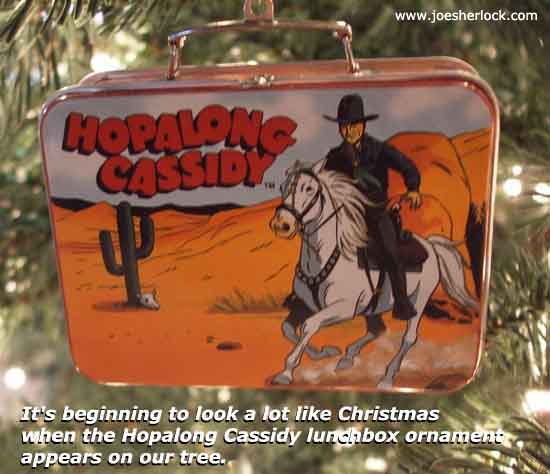
One such miniature nostalgic totem is the little Hopalong Cassidy lunchbox ornament which we place on our Christmas tree each year. In my real childhood, I never owned a Hoppy lunchbox, although I once possessed a Hopalong Cassidy Roto-Vue motion lamp.
Nevertheless, it is quite amazing what the seemingly simple stimuli of a nostalgia-evoking touchstone will accomplish - causing an ancient cortex to hum, buzz, grind gears like an antique Comptometer and dislodge, with a silent, cerebral 'ding', a long-lost memory. Triggered by something as simple as a smell, color or a passing reference to a long-forgotten name or event. The human filing system is remarkable. Unique. And very disorganized. Old memories reappear randomly and unexpectedly - like discovering an old brass jacket button at the back of a sock drawer. Reproductions - authentic or not - become nostalgic totems, helping to bring back happy memories.
 The manufacture of 'replicas' - many inaccurately rendered and/or done cheaply in Asia and/or exorbitantly overpriced - has become a major industry. Pepsi and Coke, appear to be masters at tapping into our quest for nostalgia with many of their commercials vividly extolling the Good Old Days. Then there are those faux old-timey gas pump gumball machines. Who would eat food out of a miniature gasoline dispensing device, anyway? The manufacture of 'replicas' - many inaccurately rendered and/or done cheaply in Asia and/or exorbitantly overpriced - has become a major industry. Pepsi and Coke, appear to be masters at tapping into our quest for nostalgia with many of their commercials vividly extolling the Good Old Days. Then there are those faux old-timey gas pump gumball machines. Who would eat food out of a miniature gasoline dispensing device, anyway?
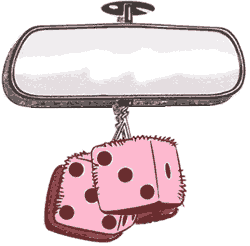 Nostalgic emotions might be evoked by an original old car of a certain type, a glance at an old LP record album or a book of old photographs that bring back memories of a fondly-recalled time. Or a recreation of Something Old. Nostalgic emotions might be evoked by an original old car of a certain type, a glance at an old LP record album or a book of old photographs that bring back memories of a fondly-recalled time. Or a recreation of Something Old.
There is always a market for retro-themed products, especially if the offering is priced right. The problem is that much of the market consists of OGFG - Old Graying Fat Guys. And their wives. These people buy such stuff as toys.
OGSC (Old Graying Skinny Guys) are more agile and seem to spend their money on Active Contemporary Stuff (Corvettes, Porsche Boxsters, custom mountain bikes, ski trips, climbing gear, etc.) rather than the Nostalgia Stuff favored by more sedentary OGFGs.
Greg Gutfeld observed the audience at a band reunion (The Police), "featuring all pudgy, balding white people, swaying, dancing in an orgy of self-congratulation. It reminded me that nostalgia is worse than porn."
These are the same OFWGs (Old Fat White Guys) who overpay for oft badly-restored Mustangs and Camaros at auctions and collector car 'dealers'. (Just look at the audience the next time you watch Mecum Auto Auctions on television.) And buy cheesy reproductions of period Coke signs as well as repro vintage movie and concert posters.
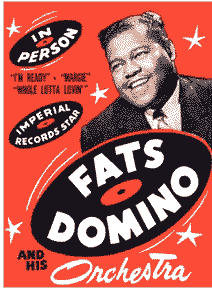
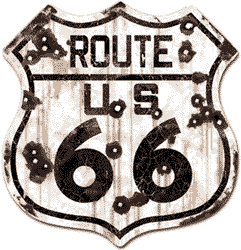 How many OGFGs do you know who own reproduction Wurlitzer jukeboxes? Or old-timey soda-pop coolers? Or line the walls of their garages with repro tin signs? Then there are those beat-up, pre-rusted Route 66 signs riddled with bullet holes - apparently sold to men who like either distressed furniture and/or beating up their wives. I am convinced that if you took all the Route 66 souvenir dreck and lined it up in a row, it would stretch many more miles than the actual road itself. How many OGFGs do you know who own reproduction Wurlitzer jukeboxes? Or old-timey soda-pop coolers? Or line the walls of their garages with repro tin signs? Then there are those beat-up, pre-rusted Route 66 signs riddled with bullet holes - apparently sold to men who like either distressed furniture and/or beating up their wives. I am convinced that if you took all the Route 66 souvenir dreck and lined it up in a row, it would stretch many more miles than the actual road itself.
OGFGs use their disposable income to attempt to recapture the aura of their youth but marketeers need to recognize two things: 1.) It's a limited market. 2.) OGFGs are price conscious. It's one thing to buy a $19.95 Howdy Doody tin sign as a totem of past times; the purchase of a full-size vehicle is another matter entirely.
In the new automobile business, there is a pretty good database of price/volume info for the OGFG retro market: Plymouth Prowler, Ford Thunderbird, Chevrolet SSR - all had a base prices exceeding $40,000. The results were sales volumes too low to be profitable/sustainable.
On the other hand, the Ford Mustang, Chrysler PT Cruiser, Chevy HHR, new VW Beetle and new Mini offered a modest starting price and sold/continue to sell at respectable volumes. Of course, these various automotive reproductions aren't the Real Thing - they represent faux nostalgia, a modern interpretation of something old.
There are good reasons behind such reinterpretations. Most Old Fat White Guys (and Gals) couldn't fit into the original Alec Issigonis-designed Mini. The new Beetle offers features like air conditioning, decent acceleration and a good heating system, all of which were sadly lacking in the air-cooled original models.

Some people overdo the retro thing, not knowing when to stop. Several years ago, I spotted a candy-apple red PT Cruiser in Newport, Washington. It was sporting the Total-Crapola Accessory Package, including woodie body cladding, full fender skirts, wide whitewalls on spoked alloys and a faux continental kit. Proving - once again - that there's no accounting for taste.
If you're a car guy, you've been exposed a seemingly endless supply of auto-branded merchandise. Some of it is clever and tasteful; other offerings are pure rubbish. Why, you might ask, are manufacturers so prolific in licensing their good name? The answer is simple: money.
Consider General Motors. In 2008, GM was the 11th largest licensor in the U.S., pulling in $3.4 billion in fees. The top U.S. spot belongs to Disney, which sells $26 billion annually of mostly-Mouse merchandise.
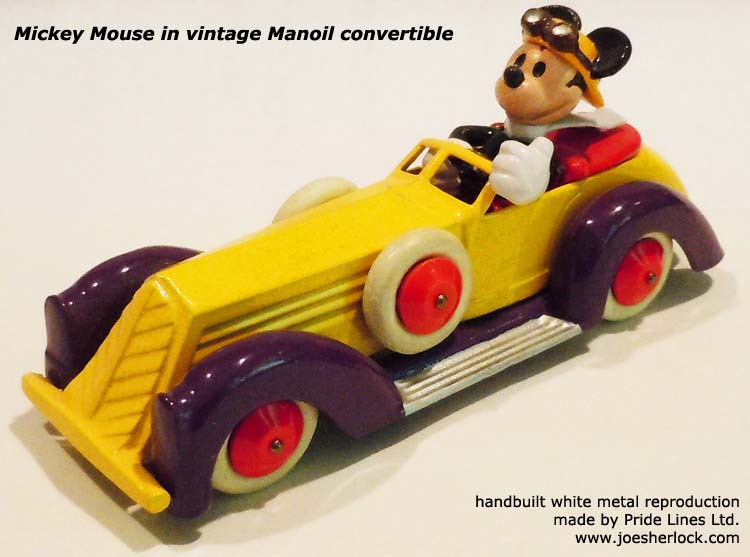
Also ahead of GM were Calvin Klein, Izod, Warner Brothers (which makes money every time some jerk buys a pair of those Yosemite Sam 'Back Off' mudflaps for his truck), Marvel Comics, Nickelodeon and Major League Baseball.
For General Motors, most of that $3.4 billion revenue is pure profit because the main expenses are a small legal staff, a clerical compliance group and a few engineers and archivists to supply photos and/or blueprints. The merchandise suppliers do all the rest - design, manufacturing, distribution and financing.
Want to put a '38 Buick image on a hooded sweatshirt? You have to pay GM a piece of your action. Pontiac may be dead but every time anyone buys a Trans Am ball cap or a scale model of a '64 GTO, GM still gets a profitable cut.
Strong brands make money even after they're long gone. Just ask the Presley family.
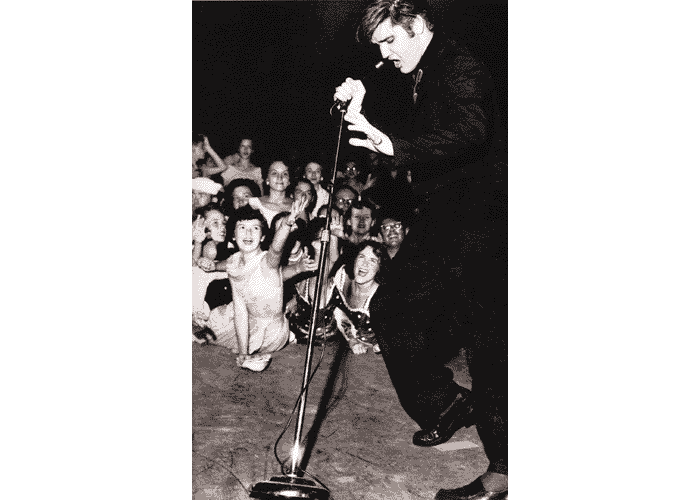
For every actual Harley-Davidson motorcycle on this Earth there seems to be at least 200 Harley-Davidson accessories - hats, neon signs, apparel, scale models and even Harley-branded model trains. H-D's extensive licensing program moves about $850 million per year of branded merchandise - mostly for old, wannabe bikers.
I must confess that I am a fan of certain things nostalgic and, as Stuart Smalley used to say, "That's OK." I admit that I have a few tin repro signs. Some car posters and lithos.
And, a 1:18 scale model of my old 1963 Corvette Sting Ray convertible in the silver-blue color - just like the one I bought just after I graduated from college. And enough other nostalgibles to fill a couple of large Dumpsters. (Sigh.)
Nevertheless, you can't live entirely in the past. James Lileks offered advice about excessive reminiscing, "Childhood belongs in a storage locker you can visit when you please, not a backpack you carry around every day."
True dat. Or, as they used to say many years ago, "Nuff said." (posted 10/14/14)
Other Pages Of Interest
| blog: 'The View Through The Windshield' |
| greatest hits: index of essays & articles | blog archives | '39 Plymouth |
| model train layout | about me | about the blog | e-mail |
copyright 2014-20 - Joseph M. Sherlock - All applicable rights reserved
Disclaimer
The facts presented on this website are based on my best guesses and my substantially faulty geezer memory. The opinions expressed herein are strictly those of the author and are protected by the U.S. Constitution. Probably.
Spelling, punctuation and syntax errors are cheerfully repaired when I find them; grudgingly fixed when you do.
If I have slandered any brands of automobiles, either expressly or inadvertently, they're most likely crap cars and deserve it. Automobile manufacturers should be aware that they always have the option of trying to change my mind by providing me with vehicles to test drive.
If I have slandered any people or corporations, either expressly or inadvertently, they should buy me strong drinks (and an expensive meal) and try to prove to me that they're not the jerks I've portrayed them to be. If you're buying, I'm willing to listen.
Don't be shy - try a bribe. It might help.
|

